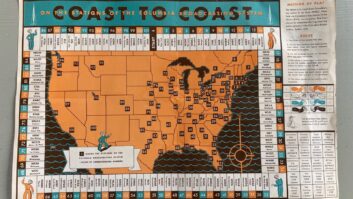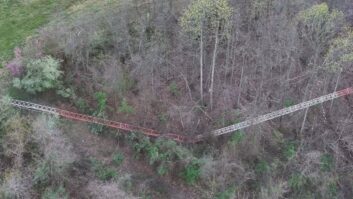LOS ANGELES�The week just passed presents us with more to think about in the on-going discussion about the future of radio (as we�ve known it).�
In France, there is a debate going on not so much about the future of digital radio, but about the future of over-the-air radio in general. On May 13, a round-table discussion was hosted by the French Senate�s Committee on Culture, Education and Communications.�”There is no question of denying the Internet success.� But this is only one means among others to listen to the radio. If the listener does not listen to digital radio, it’s because it exists only in Paris, Marseille and Nice…” said Patrice G�linet, who defended �tooth and nail� technology all morning, according to lalettre.pro. �The transmission cost of digital radio is much lower than the costs of long wave and FM. � 10,000 per year per area. Elsewhere, digital radio progresses slowly… but it is growing.� Norway has even decided to switch from analogue to the digital radio in 2017.�
Naturally, the exact opposite opinions were expressed by others in the same discussion.��Patrice G�linet is dead wrong,� said Denis Olivennes, of Lagard�re Active.� �Why on earth embark on this project (digital radio)?�A digital product which, after 20 years, has so little penetration … It is necessary to question it.�Do not add an unnecessary investment.�We would be making a mistake on this outdated technology.��
The debate continues in Australia as well. �Talk of using internet streaming as an alternative to traditional broadcasting isn’t practical when it comes to radio stations,� says Steve Ahern, the editor of radioinfo.com.au., quoted in the Sidney Morning Herald. �There are 3 million people in Melbourne, for example, and a radio station like Fox FM has a peak audience of around 800,000 listeners in the morning. �If those 800,000 people tried to listen to Fox simultaneously on their home or mobile broadband connections, it would choke the internet for the whole of Melbourne.
�Radio transmissions are much more efficient and cost-effective when you’re trying to reach so many people at once, especially when you look to regional areas where bandwidth can still be scarce.�
I don�t know how much of an expert Steve Ahern is on the technical aspects of Internet connectivity in and around Melbourne, but I would have to believe there is some amount of truth in his statement. �We�re going to continue seeing more and more raw �bandwidth� available as time goes on. It�s possible that in the not-too-distant-future, streaming to 800,000 people wouldn�t be as much of a technical challenge as it is now. The question I would have to ask, though, is this: As broadcasters, do we really want a third party coming between us and all of our listeners? It�s one thing if you are a pureplay, and internet connectivity is theonly way you have to be heard. Let�s not forget that over-the-air broadcasters have their own, unfettered means of reaching listeners. Why would we want to give that up?
Let�s look at one more way that the �third party� (i.e., an ISP) can get in the way. Northwest Open Access Network (otherwise known as NoaNet), based in Tacoma, Wash., uses over 2000 miles of fiber around the state, offering high-speed broadband connectivity. They�ve been at it for 15 years.�
A network outage in Washington state earlier this week �derailed student standardized testing, crippled municipal election and filing systems, and disrupted commuters who rely on ferries to get where they�re going,� according to an article inrcrwireless.com. NoaNet reported that the outage was attributable to �a broadcast storm.�
�Could it have been deliberate? We don�t know at this point,� said a spokesman for the Office of the Superintendent of Public Instruction. �We�d be very interested in why it happened. Why it happened could tell us how we can stop it from happening again.�
I�d love to hear you explain that one to your P.D.��










